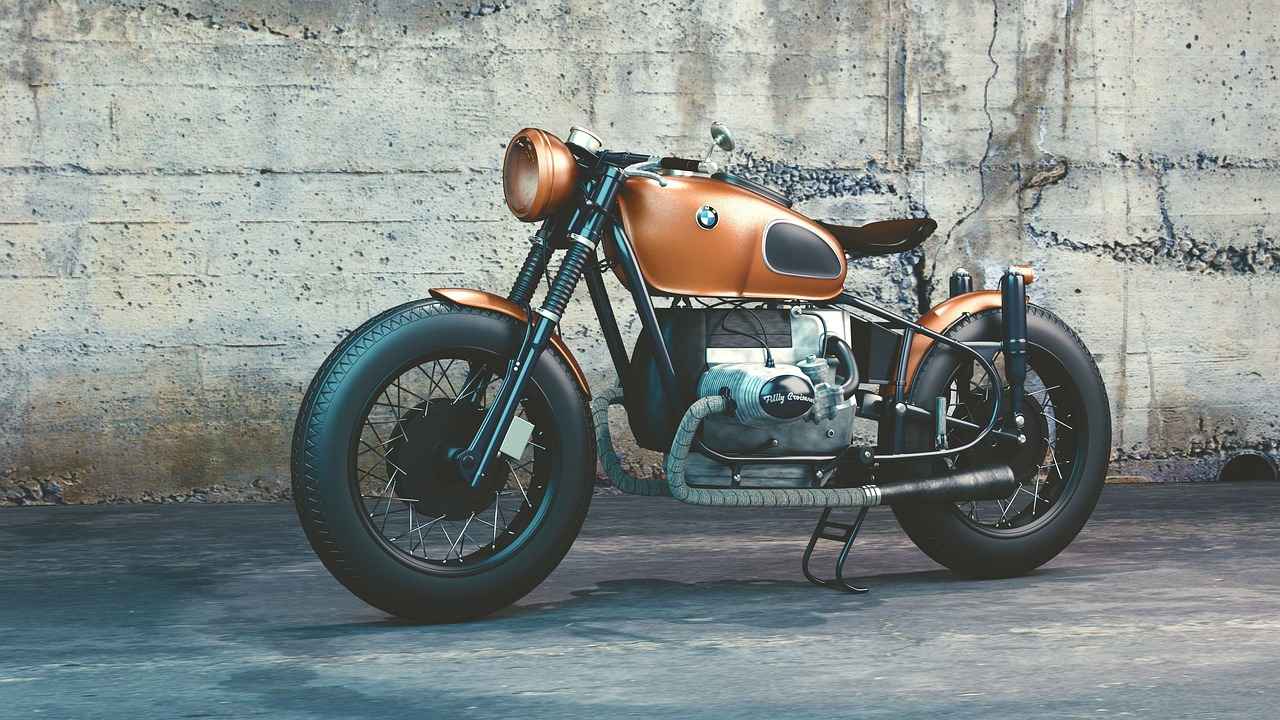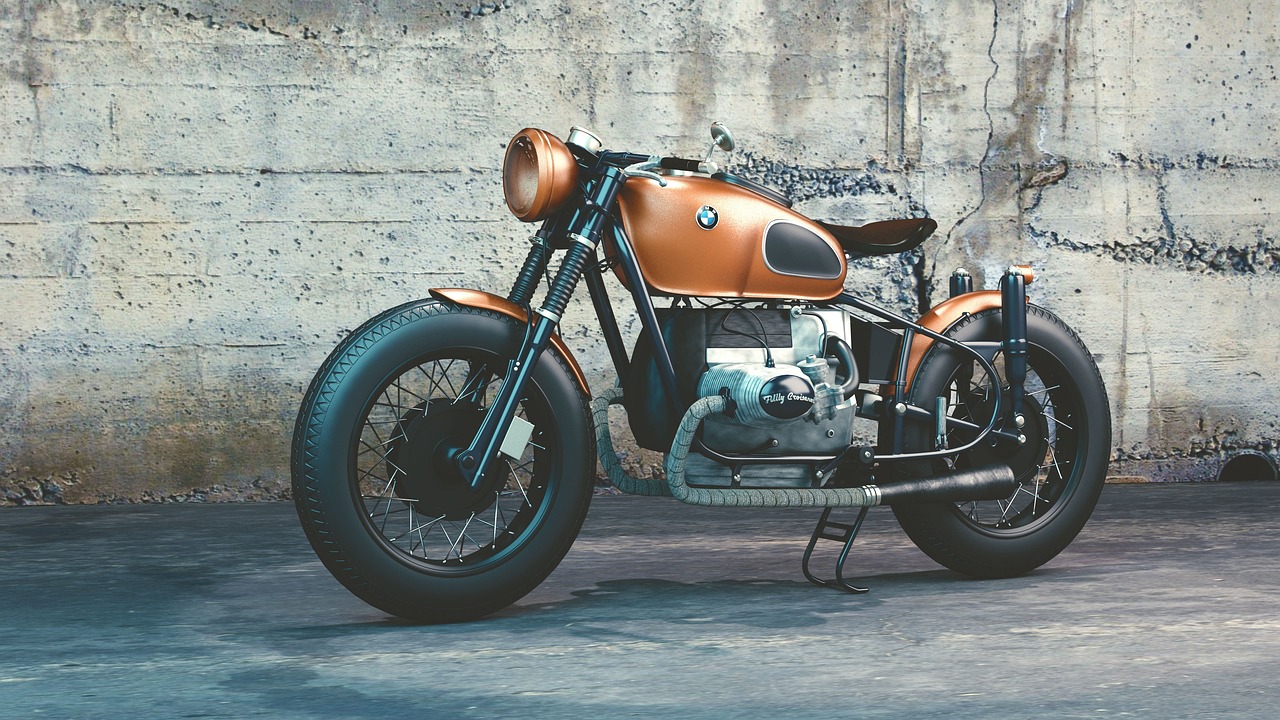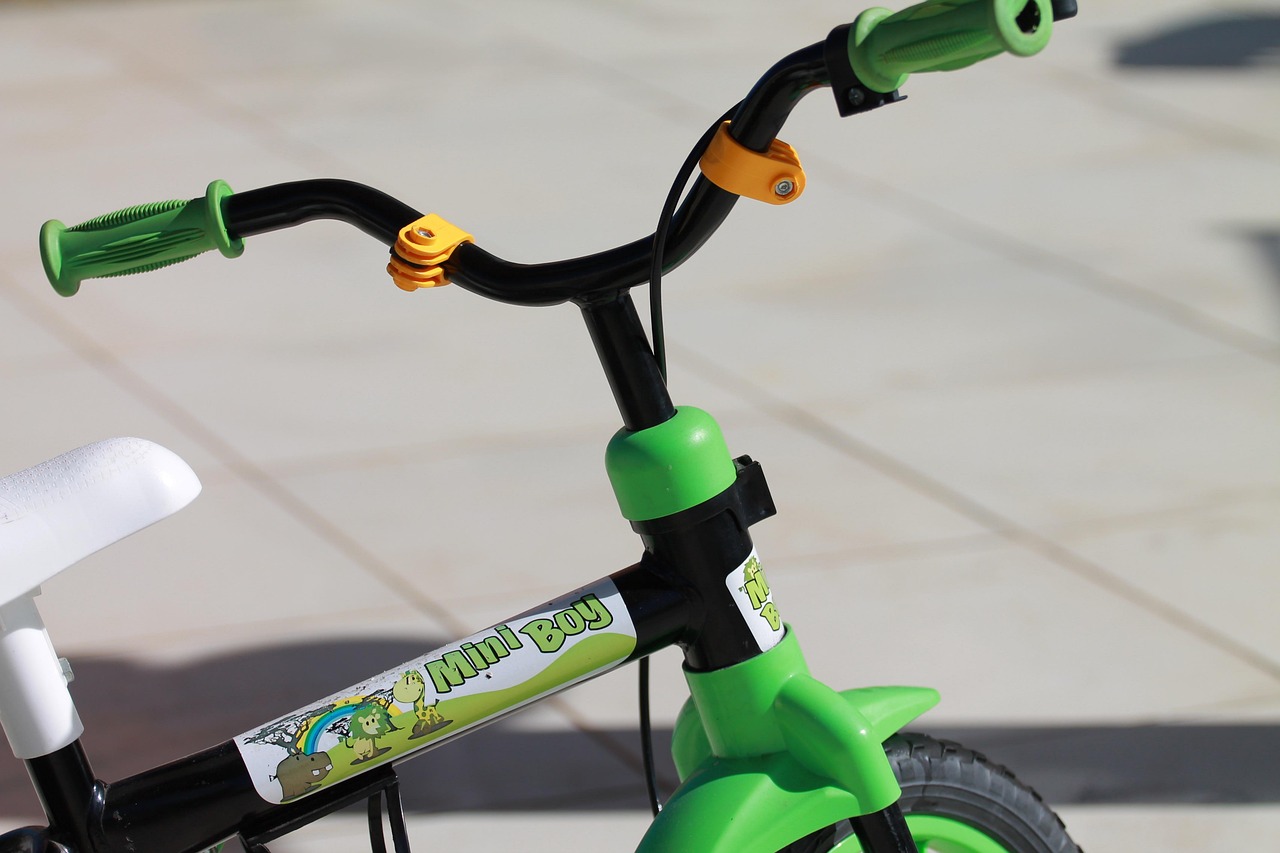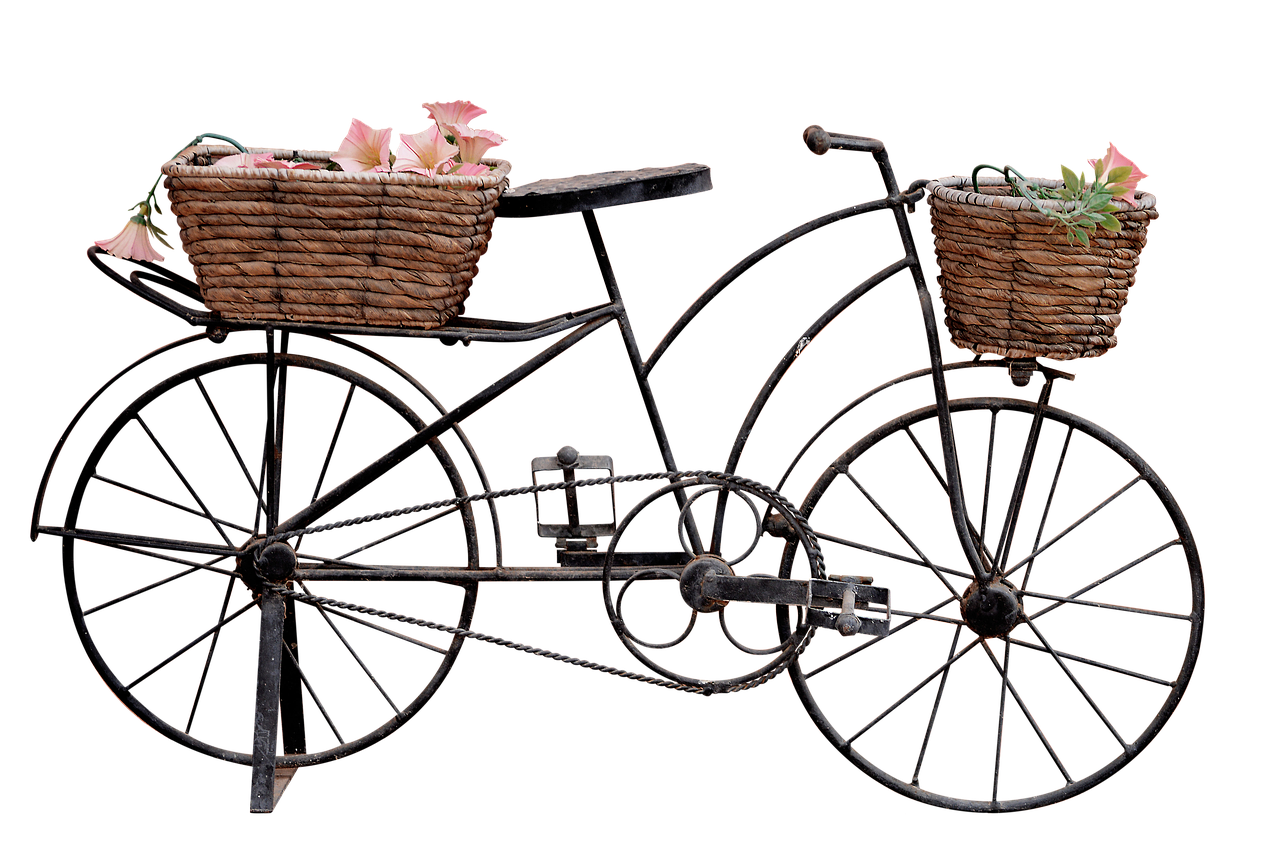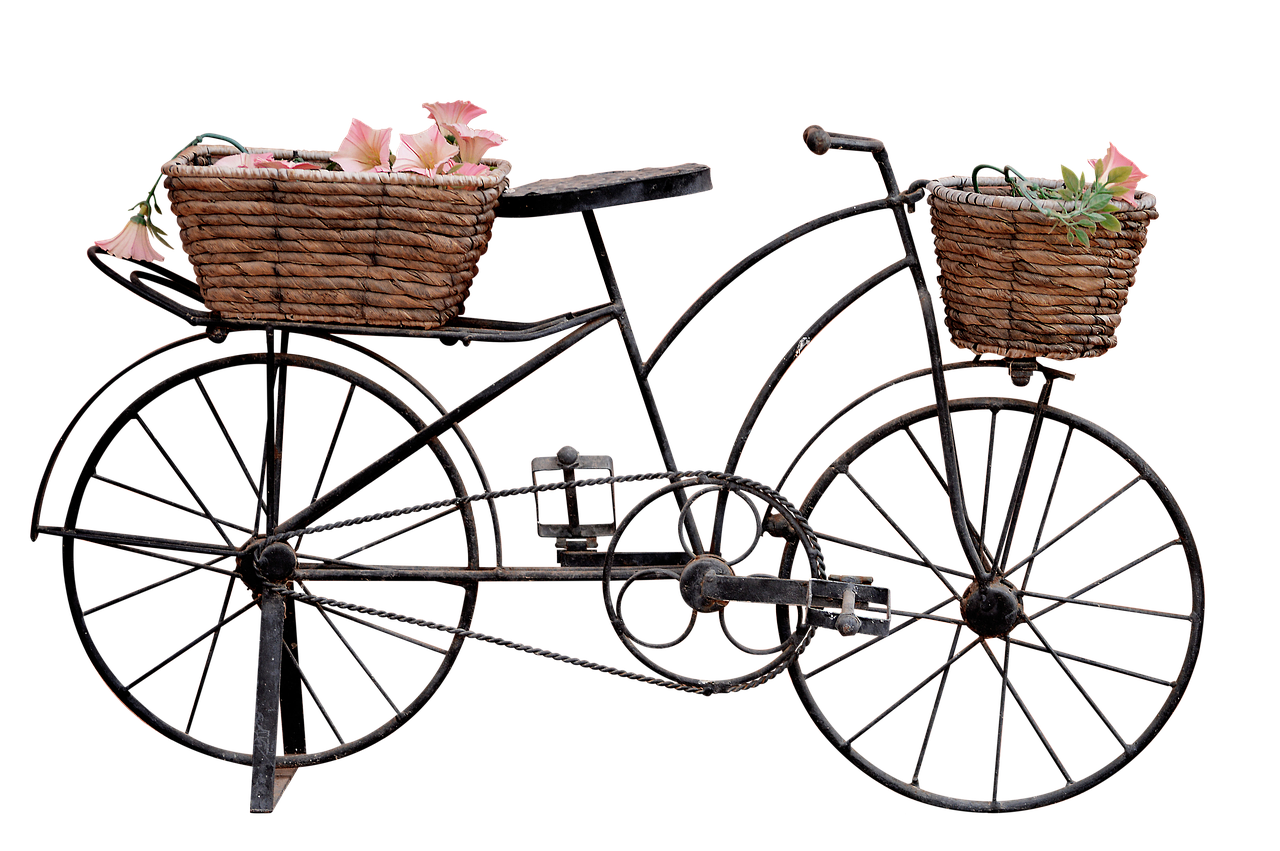This article explores various electric bike motor types, detailing their unique benefits and characteristics. Understanding these motors can help you make an informed choice when selecting an e-bike.
- Hub Motors: Hub motors are one of the most common types of electric bike motors, located in the wheel hub. They offer simplicity and ease of installation, making them popular among casual cyclists.
- Mid-Drive Motors: Positioned at the bike’s crank, mid-drive motors provide a balanced center of gravity. This setup enhances performance on hills and rough terrain, making them ideal for off-road biking.
- Geared Hub Motors: These motors include internal gears that enhance torque output, making them suitable for steep hills. They provide a good balance between power and efficiency, catering to diverse riding needs.
- Direct-Drive Motors: Known for their simplicity and reliability, direct-drive motors offer a smooth riding experience. They are often quieter and require less maintenance, appealing to many cyclists.
Performance Comparison
| Motor Type | Pros | Cons |
|---|---|---|
| Hub Motors | Easy to install, low maintenance | Less efficient on hills |
| Mid-Drive Motors | Excellent torque, better weight distribution | More complex, requires maintenance |
| Geared Hub Motors | Strong acceleration, lighter weight | Noisier, potential for more maintenance |
| Direct-Drive Motors | Reliable, smooth power delivery | Heavier, less efficient on steep inclines |
Choosing the Right Motor for Your Needs
Selecting the appropriate electric bike motor involves evaluating your riding style, terrain, and personal preferences. Each motor type has unique strengths to consider, whether you prioritize commuting or off-roading.
Conclusion: In conclusion, understanding the different types of electric bike motors and their advantages is essential for making an informed decision. Evaluate your needs, preferences, and budget to choose the best option for your cycling adventures.
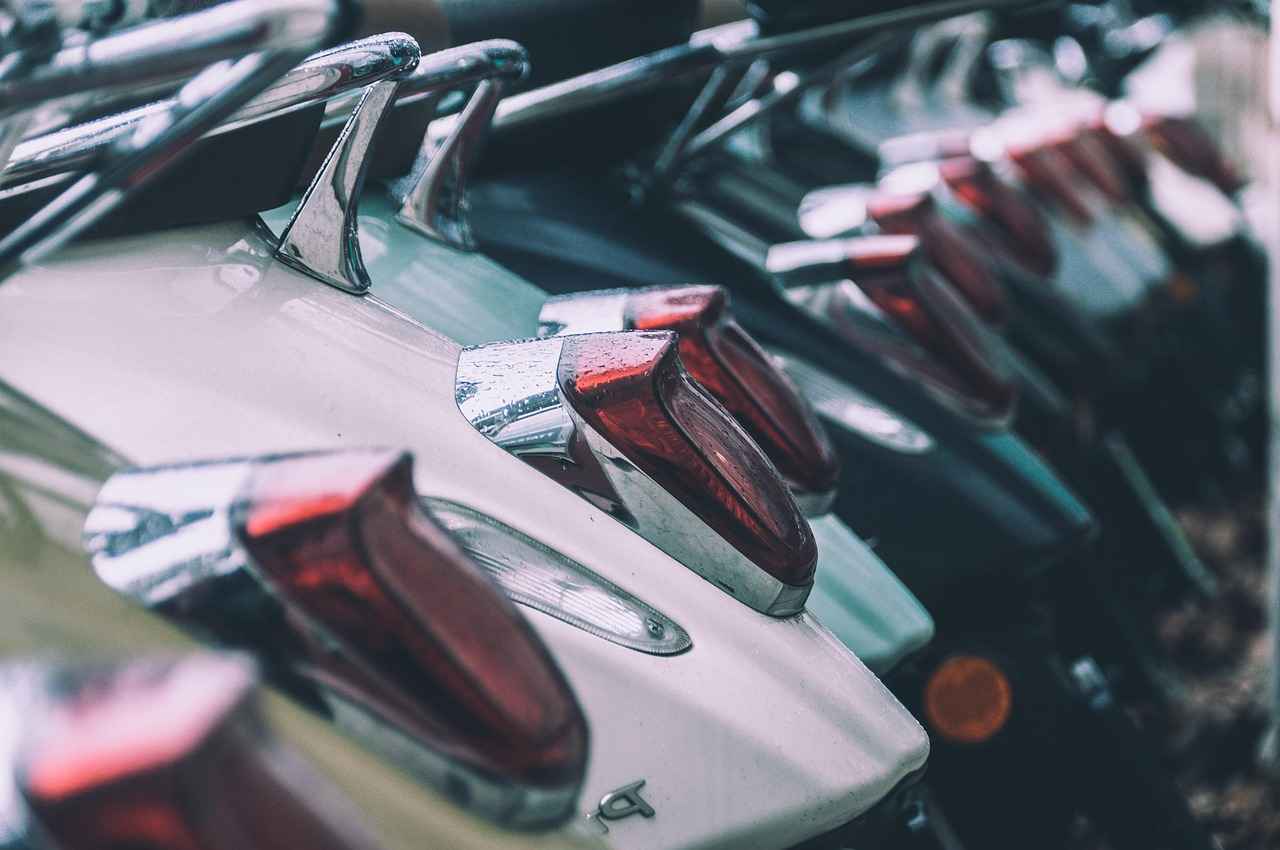
1. Hub Motors
Hub motors are among the most prevalent types of electric bike motors, strategically placed in the wheel hub. Their design contributes to the overall simplicity and ease of installation, making them an attractive option for casual cyclists and those new to the world of electric bikes.
One of the primary advantages of hub motors is their user-friendly nature. Unlike mid-drive motors, which require more complex installation and integration with the bike’s drivetrain, hub motors can be easily mounted onto the wheel, allowing for a straightforward setup. This feature is particularly appealing for individuals who may not have extensive mechanical knowledge or experience.
Additionally, hub motors provide a quiet and smooth ride. The absence of a complex gearing system means less noise and fewer components that could potentially malfunction. This makes them ideal for urban commuting, where a peaceful ride can enhance the overall experience.
Another notable benefit of hub motors is their low maintenance requirements. Since they are sealed units, they are less susceptible to dirt and damage compared to other motor types. This durability can lead to a longer lifespan, making them a cost-effective choice in the long run.
However, it’s essential to consider the limitations of hub motors. While they excel in flat terrains, they may struggle on steep inclines compared to mid-drive motors, which offer better torque and power distribution. Therefore, riders in hilly areas might want to weigh their options carefully.
In conclusion, hub motors stand out for their simplicity, ease of use, and low maintenance, making them a favored choice for many cyclists. Whether you’re commuting to work or enjoying a leisurely ride, understanding the benefits and limitations of hub motors can help you make an informed decision in your e-bike journey.
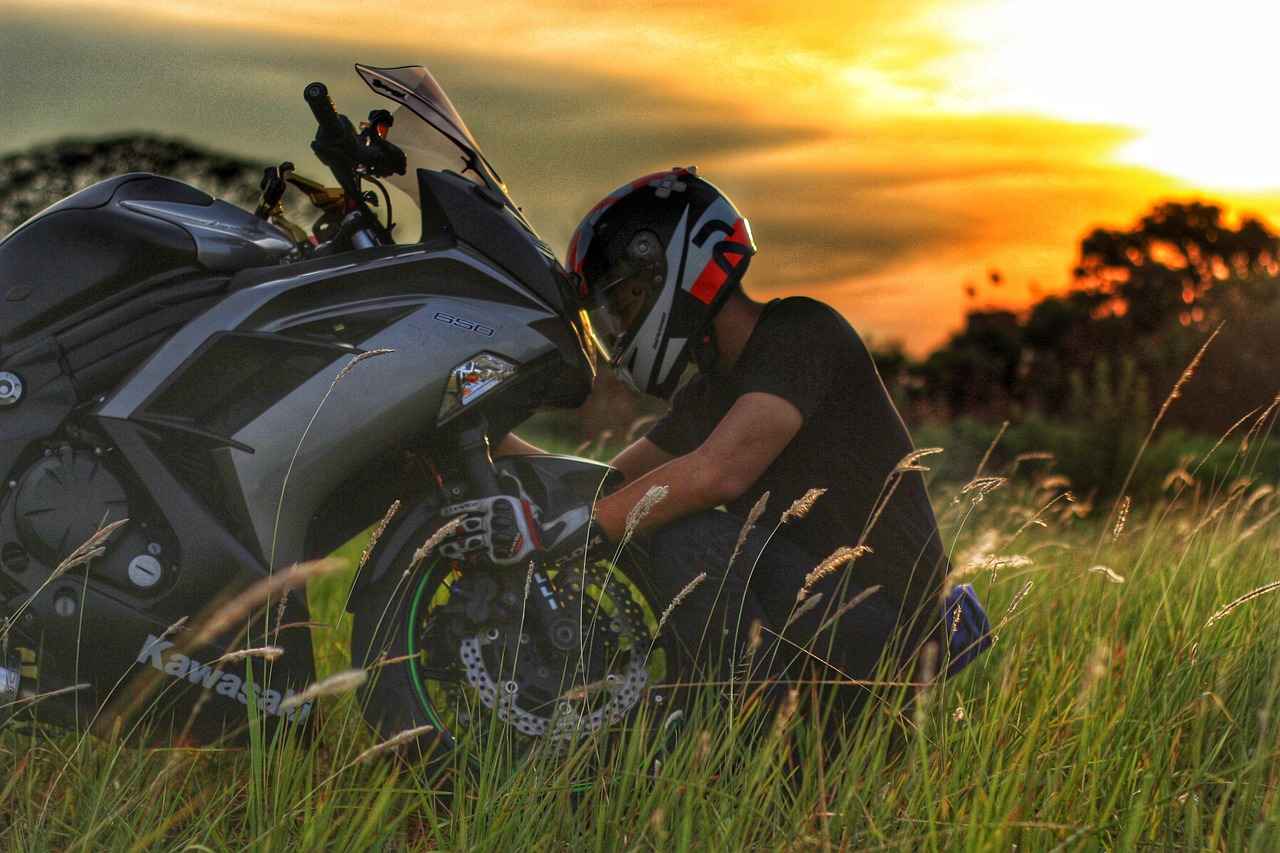
2. Mid-Drive Motors
Mid-drive motors are a popular choice among electric bike enthusiasts, positioned strategically at the bike’s crank. This unique placement offers a balanced center of gravity, which is crucial for enhancing the bike’s stability and handling. As a result, mid-drive motors excel in various riding conditions, particularly on steep hills and rough terrain, making them an excellent option for off-road biking.
One of the standout features of mid-drive motors is their ability to provide superior torque. This characteristic allows cyclists to experience better acceleration, especially when navigating uphill paths. When compared to hub motors, mid-drive systems can deliver more power to the bike’s wheels, translating to a smoother and more efficient ride. The integration with the bike’s gears further enhances this performance, enabling riders to optimize their power output according to the terrain.
| Advantages of Mid-Drive Motors | Considerations |
|---|---|
| Improved Climbing Ability: The higher torque output makes it easier to conquer steep inclines. | Maintenance Needs: Mid-drive motors may require more maintenance due to their complexity. |
| Weight Distribution: The central positioning of the motor improves handling and balance. | Cost: Generally, mid-drive systems are more expensive than hub motors. |
Moreover, mid-drive motors are designed to work in harmony with the bike’s existing gearing system. This compatibility allows riders to shift gears more effectively, which is particularly beneficial when tackling varied terrain. Whether you are cruising through city streets or navigating rugged trails, the adaptability of mid-drive motors ensures a dynamic riding experience.
In conclusion, if you are considering an electric bike for off-road adventures or challenging climbs, mid-drive motors offer a compelling combination of performance, efficiency, and handling. Their unique design and capabilities make them a top choice for those looking to enhance their cycling experience.
2.1. Performance Benefits
Performance Benefits of Mid-Drive Motors
When discussing electric bike motors, mid-drive motors stand out for their remarkable performance benefits. Positioned at the bike’s crank, these motors offer a variety of advantages that enhance the overall riding experience. Below are key aspects that highlight the superior performance of mid-drive motors.
- Torque and Acceleration: Mid-drive motors are designed to deliver high torque, which translates to improved acceleration. This feature allows cyclists to start quickly from a standstill and navigate through traffic with ease.
- Hill Climbing Efficiency: One of the most significant advantages of mid-drive motors is their ability to conquer steep inclines. With their exceptional torque output, riders can ascend hills effortlessly, making them ideal for hilly terrains and mountainous regions.
- Weight Distribution: The placement of mid-drive motors at the bike’s center helps in achieving an even weight distribution. This balance enhances the bike’s handling, providing a smoother ride and better maneuverability, especially on uneven surfaces.
- Gear Optimization: Mid-drive motors work in conjunction with the bike’s gears, allowing riders to optimize their power output. This compatibility enables cyclists to select the right gear for varying terrain conditions, enhancing efficiency and performance.
In summary, mid-drive motors excel in torque and efficiency, which significantly improves acceleration and makes hill climbing a breeze. Their design not only promotes better handling but also enhances the overall ride quality, making them a preferred choice for serious cyclists.
2.1.1. Enhanced Climbing Ability
Enhanced Climbing Ability
When it comes to conquering steep hills and challenging terrains, mid-drive motors stand out as a superior choice for electric bikes. These motors, strategically positioned at the bike’s crank, deliver higher torque output, which is essential for tackling steep inclines with ease. This feature makes them particularly advantageous for cyclists who navigate mountainous regions or hilly urban environments.
Unlike hub motors, which may struggle on steep gradients, mid-drive motors provide a balanced center of gravity, enhancing both stability and control while climbing. Riders can experience a more natural and responsive ride, allowing for greater confidence when faced with challenging slopes.
- Torque Efficiency: Mid-drive motors utilize the bike’s gears effectively, enabling cyclists to optimize their power output. By shifting gears appropriately, riders can maximize torque, making it easier to ascend steep hills without exerting excessive effort.
- Weight Distribution: The placement of mid-drive motors contributes to a well-balanced bike, which is crucial when navigating uneven terrain. This design minimizes the risk of tipping over, providing a safer riding experience.
- Versatility: Mid-drive systems excel in various conditions, allowing cyclists to switch between different terrains seamlessly. Whether you’re climbing a steep hill or navigating a flat path, these motors adapt to your riding style.
Moreover, the enhanced climbing ability of mid-drive motors translates into improved overall performance. Riders can maintain higher speeds on inclines, which not only boosts confidence but also enhances the overall enjoyment of the ride. With the right mid-drive motor, cyclists can embrace the thrill of exploring challenging landscapes without the fear of exhausting themselves.
In conclusion, if you are an avid cyclist looking to conquer steep climbs with ease, investing in a bike equipped with a mid-drive motor is a decision that will significantly enhance your riding experience.
2.1.2. Gear Compatibility
Gear Compatibility is a crucial aspect of mid-drive motors, significantly impacting the performance and efficiency of electric bikes. Unlike hub motors, mid-drive systems utilize the bike’s existing gears, allowing for a more dynamic riding experience.
When riding on variable terrain, the ability to shift gears becomes essential. Mid-drive motors are designed to work in conjunction with the bike’s transmission, enabling riders to optimize their power output based on the terrain and riding conditions. This feature is particularly beneficial when navigating steep hills or uneven surfaces, as it allows cyclists to maintain a consistent cadence and energy expenditure.
Here are some key points regarding gear compatibility with mid-drive motors:
- Enhanced Efficiency: By leveraging the bike’s gears, mid-drive motors can adjust their output to match the rider’s needs, enhancing overall efficiency.
- Improved Climbing Ability: Riders can switch to lower gears when tackling steep inclines, allowing for better torque and power management.
- Customizable Riding Experience: The integration with the bike’s gear system allows for a tailored riding experience, adapting to different terrains and rider preferences.
- Potential for Wear: It is important to note that utilizing the gears may lead to increased wear on the drivetrain components, necessitating regular maintenance.
In conclusion, the gear compatibility of mid-drive motors not only enhances the riding experience but also ensures that cyclists can tackle various terrains with ease. By understanding how to effectively use the bike’s gearing system in conjunction with the motor, riders can achieve optimal performance and efficiency.
2.2. Maintenance Considerations
Maintenance Considerations for Mid-Drive Motors
When it comes to electric bike motors, mid-drive systems are known for their superior performance and efficiency. However, they also come with certain maintenance challenges that riders should be aware of. Unlike hub motors, which are relatively straightforward, mid-drive motors are integrated into the bike’s drivetrain, making their maintenance more complex.
- Complexity of Design: Mid-drive motors are intricately designed to work with the bike’s gears. This integration can lead to increased wear and tear on components such as the chain and cassette, requiring more frequent inspections and replacements.
- Increased Wear on Drivetrain: Because mid-drive motors exert force through the bike’s gears, they can accelerate the degradation of drivetrain components. Regular maintenance checks are essential to ensure that parts like the chain, derailleur, and sprockets remain in good condition.
- Regular Lubrication: Proper lubrication of the chain and other moving parts is crucial for maintaining optimal performance. This not only reduces friction but also extends the lifespan of the drivetrain components.
- Battery and Motor Care: The mid-drive motor relies heavily on the battery’s efficiency. Regularly checking the battery health and ensuring proper charging practices can help prevent issues that may affect motor performance.
In conclusion, while mid-drive motors offer exceptional advantages in terms of performance, their complex maintenance requirements should not be overlooked. Riders who choose this type of motor should be prepared for a commitment to regular upkeep to ensure a smooth and efficient riding experience.

3. Geared Hub Motors
Geared Hub Motors represent an innovative solution in the realm of electric bike technology. These motors are designed with internal gears that significantly enhance torque output, making them an excellent choice for navigating steep hills and challenging terrains. Their unique construction allows for a more compact design while delivering impressive power, which caters to a wide range of riding needs.
One of the primary advantages of geared hub motors is their ability to provide strong acceleration. This feature is particularly beneficial for urban commuting, where quick starts from stoplights and navigating through traffic are essential. Additionally, their lightweight nature compared to direct-drive motors makes them a preferred option for many cyclists looking to maintain a manageable bike weight.
- Torque Output: The internal gearing mechanism allows for enhanced torque, making it easier to climb steep inclines.
- Efficiency: Geared hub motors balance power and efficiency, ensuring a longer battery life during rides.
- Versatility: Suitable for various riding styles, from city commuting to recreational biking.
However, it is important to consider some disadvantages associated with geared hub motors. They may require more maintenance due to their complex internal components. Additionally, they can be noisier compared to direct-drive motors, which may be a concern for some riders seeking a quieter experience.
In conclusion, geared hub motors offer a compelling mix of power, efficiency, and versatility, making them a great choice for cyclists who need to tackle diverse riding conditions. While maintenance and noise levels are factors to consider, their benefits often outweigh these concerns, providing a reliable option for both casual and dedicated riders.
3.1. Advantages of Geared Hub Motors
Geared hub motors have become increasingly popular among electric bike enthusiasts due to their unique advantages that cater to various riding needs. These motors are designed with internal gears that amplify torque, allowing for impressive performance in diverse conditions. Below are some key benefits of geared hub motors:
- Strong Acceleration: One of the standout features of geared hub motors is their ability to deliver strong acceleration. This is particularly beneficial for urban commuters who need to navigate through traffic quickly and efficiently.
- Lightweight Design: Geared hub motors are typically lighter than direct-drive motors. This reduction in weight contributes to a more nimble and responsive riding experience, making them ideal for city riding where quick maneuvers are often necessary.
- Improved Climbing Ability: With enhanced torque output, these motors excel in climbing steep hills. Commuters in hilly areas will find that geared hub motors can handle inclines with ease, providing a smooth and enjoyable ride.
- Versatile Performance: Geared hub motors are versatile and can adapt to various terrains, whether it’s flat city streets or more challenging routes. Their design allows for effective power management, ensuring a consistent and reliable performance.
- Cost-Effective Option: Generally, geared hub motors are more affordable compared to high-end mid-drive systems. This makes them a popular choice for budget-conscious cyclists looking for a reliable and efficient e-bike solution.
In summary, geared hub motors offer a combination of strong acceleration, lightweight design, and excellent climbing ability, making them a fantastic choice for urban commuting. Their versatility and cost-effectiveness further enhance their appeal, providing riders with a well-rounded option for their electric biking needs.
3.2. Disadvantages of Geared Hub Motors
While geared hub motors offer several advantages, such as enhanced torque and acceleration, they also come with certain drawbacks that potential buyers should consider. Understanding these disadvantages can help you make a more informed decision when selecting an electric bike motor.
- Increased Maintenance Needs: Geared hub motors often require more frequent maintenance compared to direct-drive motors. The internal gears can wear out over time, necessitating repairs or replacements to maintain optimal performance.
- Noise Levels: One notable downside is that geared hub motors can be noisier during operation. The engagement of gears can produce a noticeable sound, which may be distracting for some riders, especially in quiet environments.
- Weight Considerations: Although geared hub motors are generally lighter than direct-drive motors, the additional components can add to the overall weight of the bike. This may affect handling, especially in hilly terrains where weight distribution is crucial.
- Potential for Gear Slippage: In some cases, the gears may slip under heavy loads or during steep climbs. This can lead to a less efficient riding experience and may require adjustments or repairs.
- Less Efficiency at High Speeds: Geared hub motors tend to be less efficient at higher speeds compared to direct-drive options. Riders who frequently travel at high velocities may notice a decrease in performance.
In summary, while geared hub motors offer strong performance benefits, their maintenance demands and potential noise issues are important factors to consider. Weighing these disadvantages against their advantages will help you choose the best motor type for your riding style and needs.
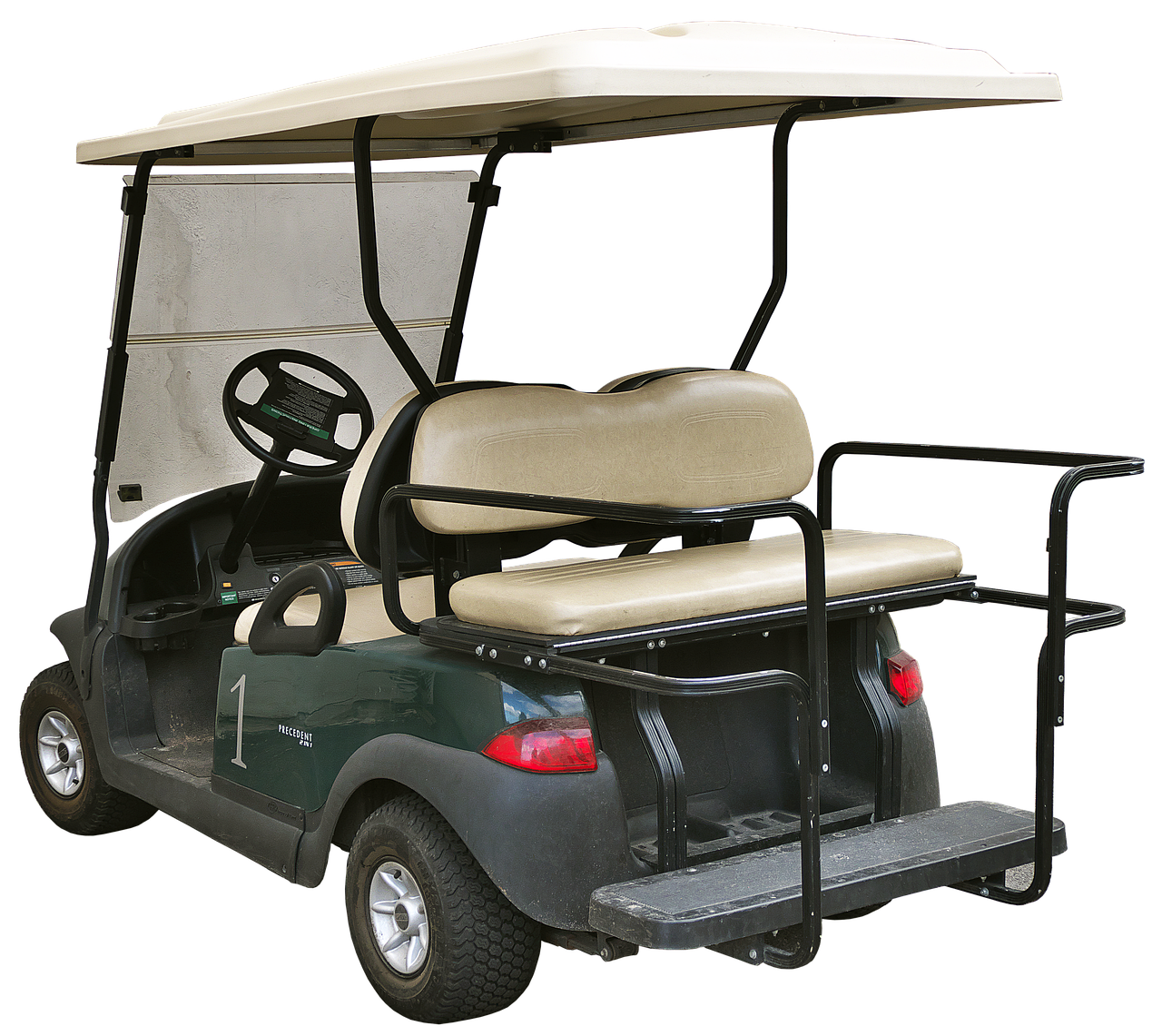
4. Direct-Drive Motors
Direct-drive motors are increasingly popular in the world of electric bikes due to their simplicity and reliability. These motors are designed to provide a seamless and enjoyable riding experience, making them a favored choice among many cyclists.
One of the standout features of direct-drive motors is their quiet operation. Unlike geared motors, which can produce noticeable noise during use, direct-drive motors operate almost silently. This characteristic enhances the overall riding experience, allowing cyclists to enjoy the sounds of nature or the bustling city without the distraction of motor noise.
Another significant advantage is the low maintenance requirements associated with direct-drive motors. With fewer moving parts compared to geared systems, these motors are less prone to wear and tear. This simplicity translates into less frequent repairs and upkeep, making them an appealing option for cyclists who prefer a hassle-free experience.
In terms of performance, direct-drive motors excel in delivering consistent power output. This feature is particularly beneficial for long-distance rides on flat terrains, where maintaining a steady speed is essential. Cyclists can expect a reliable performance, allowing them to cover greater distances without the need for frequent battery recharges.
However, it’s important to note that direct-drive motors tend to be heavier than their geared counterparts. This added weight can influence the overall dynamics of the bike, especially in hilly areas. Cyclists who frequently navigate steep inclines may find this aspect less favorable.
In conclusion, direct-drive motors offer a compelling combination of reliability, quiet operation, and low maintenance needs, making them an excellent choice for many cyclists. Understanding these characteristics can help riders make informed decisions when selecting their electric bike motor type.
4.1. Performance Characteristics
Performance Characteristics play a crucial role in the overall experience of riding an electric bike. Understanding the nuances of how these motors operate can significantly enhance your riding experience, especially when considering factors such as terrain and distance.
One of the standout features of direct-drive motors is their ability to provide consistent power output. This consistency is particularly beneficial for riders traversing flat terrains and engaging in long-distance rides. The smooth and reliable power delivery ensures that cyclists can maintain a steady pace without frequent fluctuations in speed, which is essential for maximizing efficiency.
In contrast, mid-drive motors excel in varied terrains, offering superior torque and acceleration that are advantageous when climbing hills or navigating rough paths. However, for those who primarily ride on flat surfaces, the direct-drive motor’s simplicity and efficiency can be a more suitable choice.
| Motor Type | Power Output | Efficiency | Best For |
|---|---|---|---|
| Direct-Drive | Consistent | High | Flat terrains, long distances |
| Mid-Drive | Variable | Very High | Hilly, off-road |
Moreover, the weight of the motor can also influence performance. Direct-drive motors tend to be heavier, which may affect the bike’s overall weight, especially in hilly regions. However, this added weight can contribute to stability and a smoother ride on flat surfaces.
In conclusion, when choosing an electric bike motor, it is essential to consider performance characteristics that align with your riding style and the terrains you plan to explore. Understanding these factors will help you select a motor that enhances your overall cycling experience.
4.2. Weight Considerations
When it comes to electric bikes, weight is a critical factor that can significantly influence performance and rider experience. Direct-drive motors, while known for their durability and low maintenance, tend to be heavier than their geared counterparts. This added weight can affect the overall dynamics of the bike, especially in regions characterized by steep inclines and hilly terrains.
The increased mass of direct-drive motors can lead to a few important considerations:
- Climbing Efficiency: Heavier bikes can be more challenging to maneuver uphill, as the additional weight requires more effort to pedal. This can be particularly noticeable for riders who frequently navigate hilly areas.
- Handling and Stability: The added weight can enhance stability at high speeds, but it may also make the bike feel sluggish during acceleration. Riders may need to adjust their riding style to accommodate this factor.
- Battery Life: Heavier bikes may consume more energy, potentially impacting the overall battery life. Riders should consider this when planning long rides, especially in hilly regions where power consumption can increase.
In contrast, geared motors are often lighter, providing a more agile riding experience. This can be advantageous for urban commuting and for those who prefer a responsive bike that can easily navigate through traffic or tight spaces.
Ultimately, the choice between direct-drive and geared motors should be informed by the rider’s specific needs and the typical riding conditions they encounter. For those who frequently ride in hilly areas, considering the weight implications of a direct-drive motor is essential for achieving the best performance and riding experience.
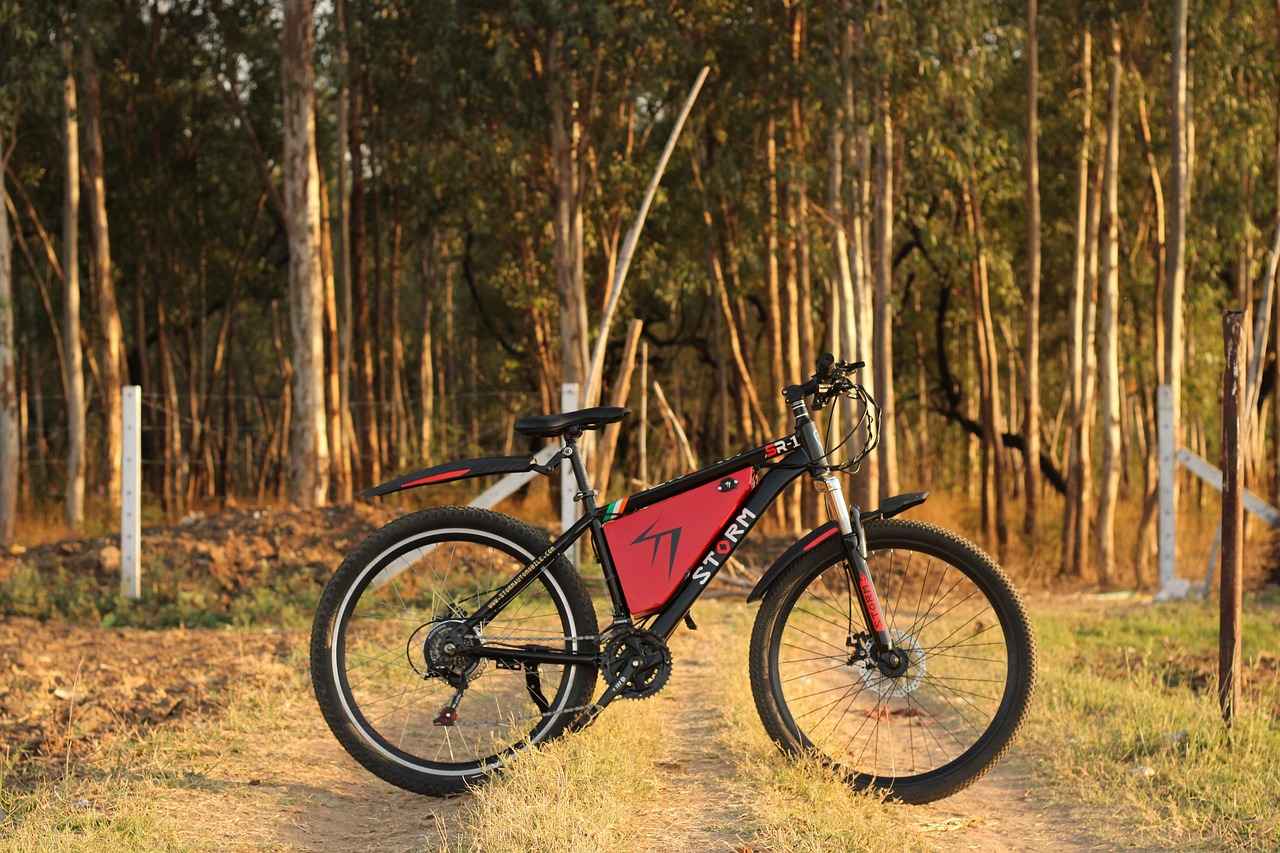
5. Hub Motor vs. Mid-Drive Motor
When it comes to choosing the right motor for your electric bike, understanding the differences between hub motors and mid-drive motors is crucial. Each type has its own unique characteristics that cater to different riding styles and preferences.
Hub Motors are typically located in the wheel hub, either at the front or rear of the bike. They are known for their simplicity and ease of installation, making them a popular choice for casual riders. One of the main advantages of hub motors is their low maintenance requirements. Since they are self-contained, they do not have complex components that can wear out quickly. Additionally, hub motors provide a smooth and quiet ride, which can be particularly appealing for urban commuting.
On the other hand, mid-drive motors are positioned at the bike’s crank, offering a different set of benefits. This placement allows for better weight distribution, enhancing the bike’s handling and stability, especially when navigating steep inclines or rough terrain. Mid-drive motors excel in torque and efficiency, making them ideal for off-road biking and hilly environments. They work in conjunction with the bike’s gears, allowing riders to optimize their power output based on the terrain.
- Performance: Mid-drive motors provide superior climbing ability due to their higher torque output, making them suitable for mountainous regions.
- Weight Distribution: The central placement of mid-drive motors enhances the bike’s balance and handling compared to hub motors.
- Cost: Generally, hub motors are more affordable, while mid-drive systems tend to be pricier due to their advanced technology.
Ultimately, the choice between hub and mid-drive motors hinges on your riding style and the type of terrain you plan to tackle. If you prioritize ease of use and low maintenance, a hub motor may be the way to go. However, if you seek performance and versatility in varied terrains, a mid-drive motor could be the better option.
In conclusion, understanding the distinctions between these two motor types can significantly impact your cycling experience. Evaluate your needs and preferences to make an informed decision that aligns with your riding goals.
5.1. Cost Comparison
Cost Comparison of Electric Bike Motors
When selecting an electric bike, understanding the cost implications of different motor types is crucial. This section will delve into the financial aspects of hub motors and mid-drive motors, providing insights to help you make an informed decision.
| Motor Type | Average Cost | Cost Factors | Value for Money |
|---|---|---|---|
| Hub Motors | $300 – $600 | Simple design, lower manufacturing costs | Great for casual riders and urban commuting |
| Mid-Drive Motors | $700 – $1,500 | Advanced technology, higher performance | Ideal for serious cyclists and off-road enthusiasts |
Hub Motors are generally more affordable than their mid-drive counterparts. The simplicity of their design contributes to lower production costs, making them a popular choice for casual cyclists and those looking for an economical option. These motors are typically integrated into the wheel hub, which allows for easier installation and maintenance. For urban commuting, where speed and efficiency are essential, hub motors provide a cost-effective solution.
In contrast, mid-drive motors tend to be pricier due to their advanced technology and enhanced performance capabilities. Positioned at the bike’s crank, they offer superior torque and efficiency, making them particularly beneficial for tackling steep inclines and varied terrains. While the initial investment is higher, many cyclists find that the performance and versatility justify the cost, especially for those who ride frequently or in challenging conditions.
Ultimately, the choice between hub and mid-drive motors should consider not only the initial cost but also the type of riding you plan to do. If you’re looking for a reliable, budget-friendly option for city riding, a hub motor may be the best fit. However, if performance and adaptability are your priorities, investing in a mid-drive motor could provide greater long-term value.
5.2. Riding Experience
When it comes to electric bikes, the riding experience can significantly vary depending on the type of motor used. Two prominent motor types, mid-drive motors and hub motors, offer distinct advantages that cater to different riding styles and preferences.
Mid-Drive Motors
Mid-drive motors are located at the bike’s crank, providing a balanced center of gravity. This positioning enhances the bike’s handling, especially on varied terrain. Riders often report a more natural feel when pedaling, as these motors work in tandem with the bike’s gears. This synergy allows for better torque management, which is crucial when navigating steep inclines or uneven surfaces. The ability to shift gears effectively means that riders can optimize their power output, making climbs feel less strenuous and descents more controlled.
Hub Motors
On the other hand, hub motors are situated in the wheel hub, offering a more straightforward and user-friendly experience. They are generally easier to install and maintain, making them a popular choice for casual riders. The simplicity of hub motors translates to a less complex riding experience, which is ideal for those who prefer leisurely rides or commuting. However, riders may notice that hub motors provide less torque compared to mid-drive systems, particularly when tackling challenging terrains.
In summary, the choice between mid-drive and hub motors ultimately depends on your riding style. If you seek a more dynamic and responsive ride, especially in hilly or off-road conditions, mid-drive motors are likely your best bet. Conversely, if you prioritize ease of use and a straightforward experience for city commuting, hub motors could be the perfect fit. Understanding these differences will help you make an informed decision that aligns with your cycling needs.
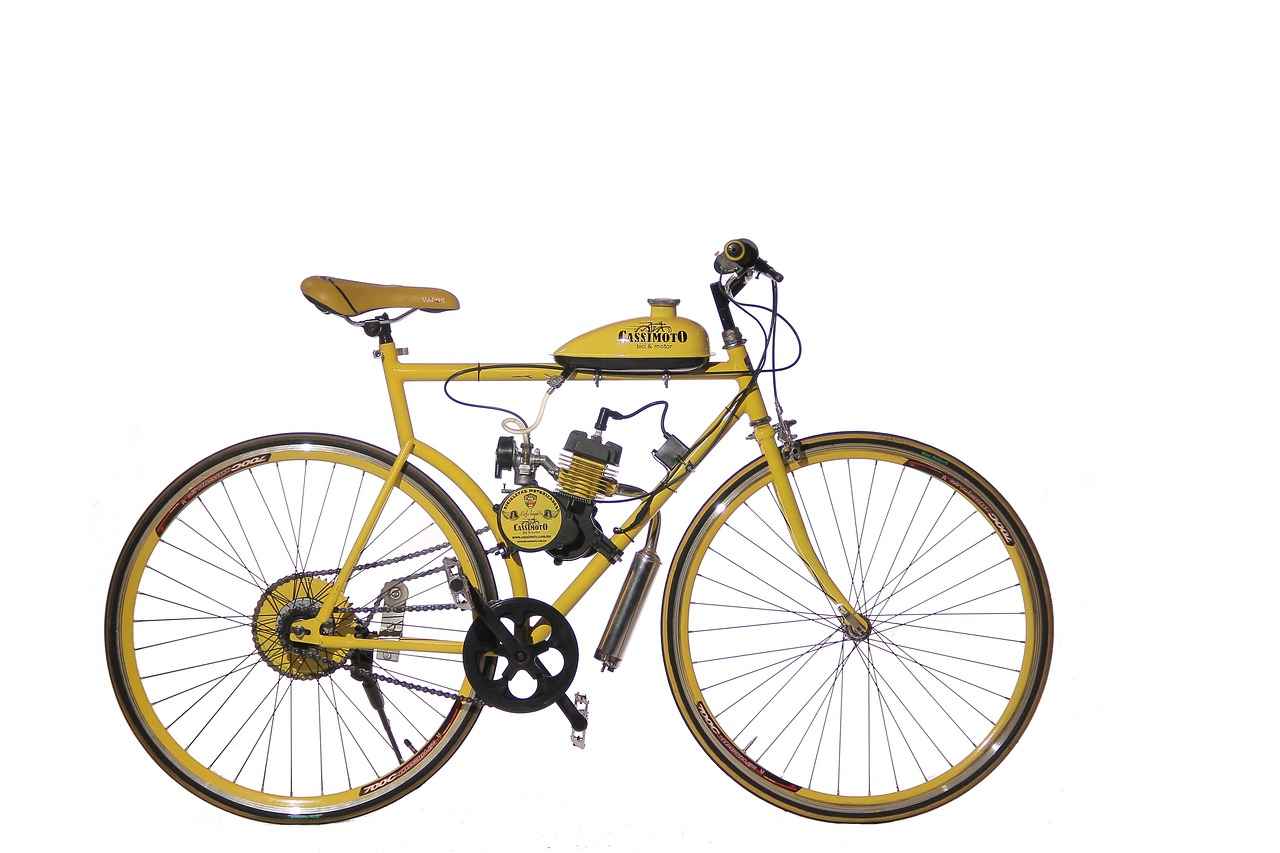
6. Battery Compatibility
Understanding battery compatibility is paramount for maximizing the performance of your electric bike motor. Each type of motor has unique requirements regarding battery types and capacities, which directly influence functionality and overall riding experience.
When selecting a battery for your electric bike, it’s essential to consider the following factors:
- Battery Chemistry: The most common battery chemistry used in e-bikes is lithium-ion. These batteries are favored due to their lightweight, high energy density, and long lifespan. Other types, such as lead-acid batteries, may be cheaper but are heavier and less efficient.
- Voltage Requirements: Electric bike motors operate at specific voltages. It is crucial to match the battery voltage with that of the motor to ensure optimal performance. Using a battery with a higher voltage than specified can damage the motor.
- Capacity (Ah): The capacity of the battery, measured in amp-hours (Ah), determines how long you can ride before needing a recharge. A higher capacity battery can provide a longer range, but it may also add weight to the bike.
- Discharge Rate: The battery’s discharge rate (C-rate) indicates how quickly it can deliver power. For high-performance motors, selecting a battery with an adequate discharge rate is crucial to avoid performance issues.
Moreover, compatibility extends beyond just voltage and capacity; the connector type and mounting options must also align with your bike’s specifications. Always refer to the manufacturer’s guidelines to ensure you choose the right battery.
In conclusion, understanding battery compatibility is not just about selecting any battery that fits; it involves a careful evaluation of various factors to ensure your electric bike operates efficiently and effectively. By making informed choices regarding battery selection, you can enhance your riding experience and prolong the lifespan of your electric bike motor.
6.1. Battery Types
Battery Types play a crucial role in the performance and efficiency of electric bikes. Among the various battery options available, Lithium-ion batteries have emerged as the most popular choice for e-bikes due to their unique advantages. This section will delve into the characteristics of lithium-ion batteries, their benefits, and why they are suitable for different motor types.
Why Choose Lithium-Ion Batteries?
- Lightweight Design: Lithium-ion batteries are significantly lighter than other battery types, such as lead-acid batteries. This weight advantage is essential for electric bikes, as it enhances overall maneuverability and riding efficiency.
- High Energy Density: These batteries offer a higher energy density, which means they can store more energy in a smaller space. This feature allows for longer riding ranges, making them ideal for both commuting and recreational use.
- Longevity: Lithium-ion batteries have a longer lifespan compared to traditional battery types. They can withstand numerous charge cycles without significant degradation, ensuring that e-bike users enjoy extended use without frequent replacements.
- Fast Charging: One of the standout features of lithium-ion batteries is their ability to charge quickly. This capability is particularly beneficial for riders who need to recharge their e-bikes between trips.
Compatibility with Motor Types
Lithium-ion batteries are versatile and can be paired with various electric bike motor types, including:
- Hub Motors: Their lightweight nature complements hub motors, making them a popular choice for urban commuting.
- Mid-Drive Motors: The efficiency of lithium-ion batteries enhances the performance of mid-drive motors, especially on challenging terrains.
- Geared and Direct-Drive Motors: Regardless of the motor type, lithium-ion batteries provide the power and longevity needed for optimal performance.
Conclusion
In summary, lithium-ion batteries are the preferred choice for electric bikes due to their lightweight design, high energy density, and longevity. Their compatibility with various motor types makes them an essential component for achieving the best performance in e-bikes.
6.2. Capacity Considerations
Selecting the right battery capacity is crucial for enhancing your electric bike’s performance and maximizing your riding range. The relationship between battery capacity and motor type is a vital consideration that can greatly influence your overall experience on the road.
- Understanding Battery Capacity: Battery capacity is measured in amp-hours (Ah) or watt-hours (Wh). A higher capacity means that you can travel longer distances before needing to recharge. For instance, a 500Wh battery will typically provide a longer range than a 250Wh battery, assuming similar conditions.
- Motor Type Compatibility: Different motor types, such as hub motors and mid-drive motors, have varying power requirements. For example, mid-drive motors generally demand more energy, making it essential to pair them with a higher capacity battery to ensure optimal performance.
- Impact on Riding Range: The riding range is significantly affected by battery capacity. A well-matched battery and motor combination allows you to achieve your desired distance without frequent recharges. This is particularly important for long-distance commuters or recreational riders who enjoy extended trips.
- Performance Factors: Besides range, battery capacity also influences the bike’s acceleration and climbing ability. A higher capacity battery can provide more power to the motor, enabling better performance on inclines and during quick accelerations.
When choosing a battery, consider your typical riding conditions and the terrain you will encounter. For example, if you frequently ride in hilly areas, opting for a battery with higher capacity will help maintain performance and efficiency.
In summary, selecting the right battery capacity is not just about numbers; it’s about enhancing your overall riding experience. Make sure to align your battery choice with your motor type and riding needs for the best results.

7. Legal Regulations
Understanding the Legal Landscape of Electric Bike Motors
As the popularity of electric bikes continues to rise, it is essential for riders to be aware of the legal regulations governing electric bike motors in their respective regions. These laws can significantly influence not only the design and functionality of e-bikes but also the safety and compliance of the riders.
| Region | Speed Limit | Motor Power |
|---|---|---|
| USA | 20 mph (Class 1 & 2), 28 mph (Class 3) | 750W max |
| Europe | 15.5 mph | 250W max |
| Canada | 20 mph | 500W max |
Many regions impose speed limits on e-bikes, which can vary significantly. For instance, in the United States, Class 1 and Class 2 e-bikes are limited to 20 mph, while Class 3 can go up to 28 mph. Familiarizing yourself with these regulations is crucial for safe riding and to avoid potential fines.
E-bikes are often classified into different categories based on motor type and power output. These classifications influence how they are regulated and used on public roads. Understanding the distinctions between Class 1 (pedal-assist only), Class 2 (throttle-assisted), and Class 3 (high-speed pedal-assist) is essential for compliance with local laws.
In addition to national laws, local regulations can vary widely. Some cities may have specific rules regarding where e-bikes can be ridden, helmet requirements, or age restrictions. It is advisable to check with local authorities to ensure compliance and promote safe riding practices.
Conclusion: Understanding the legal regulations surrounding electric bike motors is vital for ensuring a safe and enjoyable riding experience. By staying informed about speed limits, classifications, and local laws, riders can navigate the roads confidently and responsibly.
7.1. Speed Limits
When it comes to riding electric bikes, understanding the legal regulations surrounding them is essential for both safety and compliance. One of the most critical aspects of these regulations is the speed limits imposed on e-bikes, which can significantly influence their motor power and design.
Different regions have set varying speed limits for electric bikes, typically categorizing them into different classes based on their maximum speed and motor power. For instance, in many areas, e-bikes are limited to a maximum speed of 20 mph when powered solely by the motor, while others may allow speeds up to 28 mph if the rider is pedaling. Understanding these distinctions is crucial for anyone looking to ride an e-bike legally.
These speed limits not only affect the motor’s maximum power output but also influence the overall design and capabilities of the bike. Manufacturers often tailor their e-bikes to comply with these regulations, which can include limiting the motor’s wattage or incorporating features that ensure the bike remains within legal speed constraints. This can impact the riding experience, especially for those who may require higher speeds for commuting or recreational purposes.
Moreover, being familiar with local regulations helps riders avoid potential fines or penalties. In some regions, failure to comply with speed limits can lead to the classification of an e-bike as a motor vehicle, which requires registration and insurance. Therefore, it is imperative for riders to do their homework and understand the laws that apply to their specific area.
In conclusion, understanding the speed limits imposed on e-bikes is crucial for safe riding. Not only does it affect the motor power and design of the bike, but it also ensures compliance with local laws, allowing for a more enjoyable and responsible riding experience.
7.2. Classifications of E-Bikes
Classifications of E-Bikes are essential for understanding how different types of electric bikes are categorized based on their motor type and power output. This classification not only influences the performance and usability of the e-bikes but also determines their legal regulations on public roads.
In general, e-bikes can be classified into three main categories:
- Class 1 E-Bikes: These bikes are equipped with a pedal-assist system that provides assistance only when the rider is pedaling. The motor ceases to provide assistance when the bike reaches a speed of 20 mph (32 km/h). This classification is popular among commuters and recreational riders.
- Class 2 E-Bikes: Class 2 bikes come with a throttle that allows riders to engage the motor without pedaling. Similar to Class 1, the assistance cuts off at 20 mph. This makes them suitable for those who may prefer a more relaxed riding experience.
- Class 3 E-Bikes: These are high-speed e-bikes that assist up to 28 mph (45 km/h) when pedaling. Class 3 bikes often come with additional features for safety and performance, making them ideal for urban commuting and longer rides.
Understanding these classifications is crucial for riders, as each class has specific regulations that can affect where and how you can ride. For instance, some regions may restrict Class 3 e-bikes from bike paths or trails, while others may allow all classes on public roads.
Moreover, the motor type and power output can also influence how e-bikes are regulated. For example, mid-drive motors are often favored for their efficiency and performance on varying terrains, whereas hub motors are popular for their simplicity and ease of use.
In conclusion, knowing the classifications of e-bikes helps riders choose the right model for their needs while ensuring compliance with local laws. By considering factors such as motor type and power output, cyclists can enjoy a safe and enjoyable riding experience.

8. Choosing the Right Motor for Your Needs
Choosing the Right Motor for Your Needs
Selecting the appropriate electric bike motor is essential for optimizing your riding experience. This decision involves evaluating your riding style, the terrain you will encounter, and your personal preferences. Each motor type offers unique strengths that cater to different cycling needs.
1. Assessing Your Riding Style
- Commuting: If your primary use is for commuting, a hub motor may be ideal due to its simplicity and ease of use.
- Off-Roading: For those who enjoy trail riding or off-road adventures, a mid-drive motor is often the best choice, as it provides better torque and climbing ability.
2. Evaluating Terrain
- Flat Terrain: Direct-drive motors excel in flat areas, offering consistent power and efficiency for longer rides.
- Hilly Regions: If you live in a hilly area, consider a mid-drive or geared hub motor for enhanced climbing capabilities.
3. Personal Preferences
- Maintenance: If you prefer low-maintenance options, direct-drive motors might be more suitable.
- Weight Considerations: Riders concerned about weight may opt for geared hub motors, which are typically lighter than direct-drive motors.
4. Budget Considerations
Your budget is a significant factor when choosing an electric bike motor. Generally, hub motors are more affordable, while mid-drive systems tend to be pricier due to their advanced technology. It’s crucial to balance your budget with the features and performance you desire.
Conclusion
In summary, selecting the right electric bike motor requires careful consideration of your riding style, terrain, and personal preferences. By understanding the strengths and weaknesses of each motor type, you can make an informed decision that enhances your cycling experience.
8.1. Commuting vs. Off-Roading
When selecting an electric bike, one of the most critical factors to consider is your intended use: commuting or off-roading. Each application demands different motor types to ensure optimal performance and user satisfaction.
If you are primarily using your e-bike for commuting, you will benefit from a motor that emphasizes efficiency and speed. Hub motors are often favored in this scenario due to their simplicity and ease of use. They provide a smooth ride on paved surfaces, making them ideal for urban environments where quick stops and starts are common. Additionally, hub motors tend to be quieter, which is a significant advantage for daily commuters who navigate through busy streets.
On the other hand, if your adventures take you off the beaten path, a mid-drive motor may be the better choice. These motors provide enhanced torque and climbing ability, making them suitable for tackling steep hills and rugged terrain. The mid-drive design allows for better weight distribution, improving handling and stability on uneven surfaces. This type of motor also works in conjunction with the bike’s gears, allowing for optimal power management as you navigate challenging trails.
Ultimately, the decision between commuting and off-roading will significantly influence your electric bike motor choice. It’s essential to assess your riding style and the types of terrains you will encounter regularly. By aligning your motor choice with your specific needs, you can enhance your riding experience and ensure that your e-bike performs at its best.
In conclusion, whether you are commuting in the city or exploring off-road trails, understanding the differences in motor types can help you make an informed decision. Consider your primary riding conditions, and choose a motor that complements your cycling lifestyle.
8.2. Budget Considerations
When it comes to selecting the right electric bike motor, your budget is a significant factor that can greatly influence your decision. The price range for electric bike motors varies widely, with options available for every financial bracket. Understanding how to navigate these options can help you find a motor that meets both your performance needs and your financial constraints.
Typically, hub motors are the most affordable choice, making them ideal for casual riders or those new to electric biking. Prices for hub motors can start as low as $300, allowing you to enjoy the benefits of electric biking without a hefty investment. However, while they are budget-friendly, they may lack the advanced features and performance capabilities of higher-end motors.
On the other hand, mid-drive motors tend to be more expensive, often ranging from $600 to $1,500 or more. These motors provide enhanced performance, particularly on challenging terrains, and are favored by serious cyclists. The increased cost reflects their sophisticated technology, which allows for better torque and efficiency, making them worth considering if you’re planning to tackle hilly or off-road routes.
Another option is geared hub motors, which fall somewhere in between in terms of pricing. They typically cost around $400 to $800, offering a good balance of performance and affordability. These motors are particularly useful for urban commuting, providing a good mix of power and efficiency.
Ultimately, it’s essential to evaluate your riding style and terrain needs when considering your budget. If you’re an occasional rider, a more affordable hub motor may suffice. However, if you plan to ride frequently or in challenging conditions, investing in a mid-drive motor could enhance your overall experience.
In conclusion, budget considerations are crucial when selecting an electric bike motor. By understanding the price ranges and the features associated with different motor types, you can make a well-informed decision that aligns with your financial situation and cycling goals.

9. Future Trends in Electric Bike Motors
The electric bike industry is undergoing rapid advancements, making it essential for consumers to stay updated on the latest trends in electric bike motors. This knowledge not only aids in making informed purchasing decisions but also enhances the overall riding experience.
As technology progresses, various innovations in electric bike motors are emerging, influencing their performance and utility. Below are some key trends shaping the future of electric bike motors:
- Smart Motor Technology: Integration of smart technology is becoming increasingly popular. Motors equipped with sensors and connectivity features allow riders to track performance metrics through mobile apps. This innovation provides real-time feedback, helping cyclists optimize their rides.
- Lightweight Materials: Manufacturers are focusing on using lightweight yet durable materials in motor construction. This trend not only enhances the bike’s overall performance but also improves its portability, making it easier to handle and transport.
- Increased Battery Efficiency: Advances in battery technology are leading to longer-lasting and more efficient batteries. This means riders can enjoy extended ranges without the need for frequent recharging, making electric bikes more practical for daily use.
- Eco-Friendly Designs: As sustainability becomes a priority, there is a growing emphasis on eco-friendly designs and materials. Electric bike manufacturers are adopting practices that reduce environmental impact, appealing to environmentally conscious consumers.
- Customization Options: The demand for personalized riding experiences is on the rise. Future electric bikes may offer customizable motor settings, allowing riders to adjust power output and performance based on individual preferences and riding conditions.
In conclusion, staying informed about these future trends in electric bike motors can significantly enhance your cycling experience. By understanding the advancements in technology and design, you can make better choices that align with your riding style and needs.
9.1. Advancements in Motor Technology
Advancements in Motor Technology are revolutionizing the electric bike industry, significantly enhancing the riding experience for cyclists. One of the most exciting developments in this field is the integration of smart motors with mobile applications. These innovations offer users unparalleled control and customization options, transforming how cyclists interact with their e-bikes.
Smart motors are equipped with sensors and connectivity features that allow them to communicate with smartphones or other devices. This integration enables riders to monitor their performance metrics in real-time, including speed, distance traveled, and battery life. Moreover, users can adjust settings such as power assistance levels directly from their smartphones, tailoring the riding experience to their preferences.
- Enhanced Control: Cyclists can customize their ride, adjusting the motor’s output based on terrain and personal fitness levels.
- Data Tracking: The ability to track performance metrics helps riders set goals and monitor progress over time.
- Navigation Features: Many smart motors come with GPS integration, providing route guidance and tracking capabilities.
Additionally, these motors often feature advanced algorithms that optimize energy consumption, allowing for longer rides on a single charge. By analyzing the rider’s behavior and terrain, smart motors can adjust their power output dynamically, ensuring maximum efficiency. This not only enhances the cycling experience but also contributes to sustainability efforts by reducing energy waste.
As the electric bike market continues to grow, the demand for smart motor technology is expected to rise. Manufacturers are investing in research and development to create even more sophisticated systems that enhance safety, performance, and user engagement. This trend signifies a shift towards a more connected and intelligent cycling experience, making e-bikes more appealing to a broader audience.
In conclusion, the advancements in motor technology, particularly the integration of smart motors with apps, are set to redefine the future of cycling. By providing cyclists with greater control, enhanced performance tracking, and improved efficiency, these innovations are paving the way for a new era in electric biking.
9.2. Environmental Considerations
Environmental Considerations have become a pivotal aspect of the electric bike industry, particularly as sustainability gains traction globally. As consumers become more aware of their ecological footprint, manufacturers are responding by prioritizing eco-friendly materials and energy-efficient designs for electric bike motors. This shift not only addresses environmental concerns but also enhances the overall appeal of e-bikes to a broader audience.
The incorporation of sustainable practices begins with the choice of materials. Many manufacturers are now utilizing recycled and biodegradable materials in their motor construction. This not only reduces waste but also minimizes the carbon footprint associated with production. For instance, some brands are exploring the use of plant-based plastics and lightweight metals that can be easily recycled at the end of their life cycle.
In addition to material choices, the design of electric bike motors is evolving to enhance energy efficiency. Advanced technologies such as regenerative braking systems are being integrated, which allow the motor to recover energy during braking, thereby extending battery life and improving overall efficiency. This innovation not only benefits the rider by providing longer rides but also contributes to a reduction in energy consumption.
Furthermore, manufacturers are investing in renewable energy sources for their production processes. By utilizing solar or wind energy, companies can significantly reduce their reliance on fossil fuels, thereby diminishing their environmental impact. This commitment to sustainability resonates with consumers who prioritize eco-conscious purchasing decisions.
As the electric bike market continues to grow, the emphasis on sustainable practices will likely become even more pronounced. Consumers are encouraged to consider the environmental implications of their purchases and to seek out brands that align with their values. The future of electric bikes is not only about innovation in performance but also about fostering a sustainable and environmentally friendly cycling culture.
In conclusion, the movement towards eco-friendly materials and energy-efficient designs in electric bike motors is not just a trend; it is a necessary evolution in the face of global environmental challenges. By choosing sustainable options, consumers can contribute to a greener future while enjoying the benefits of electric biking.
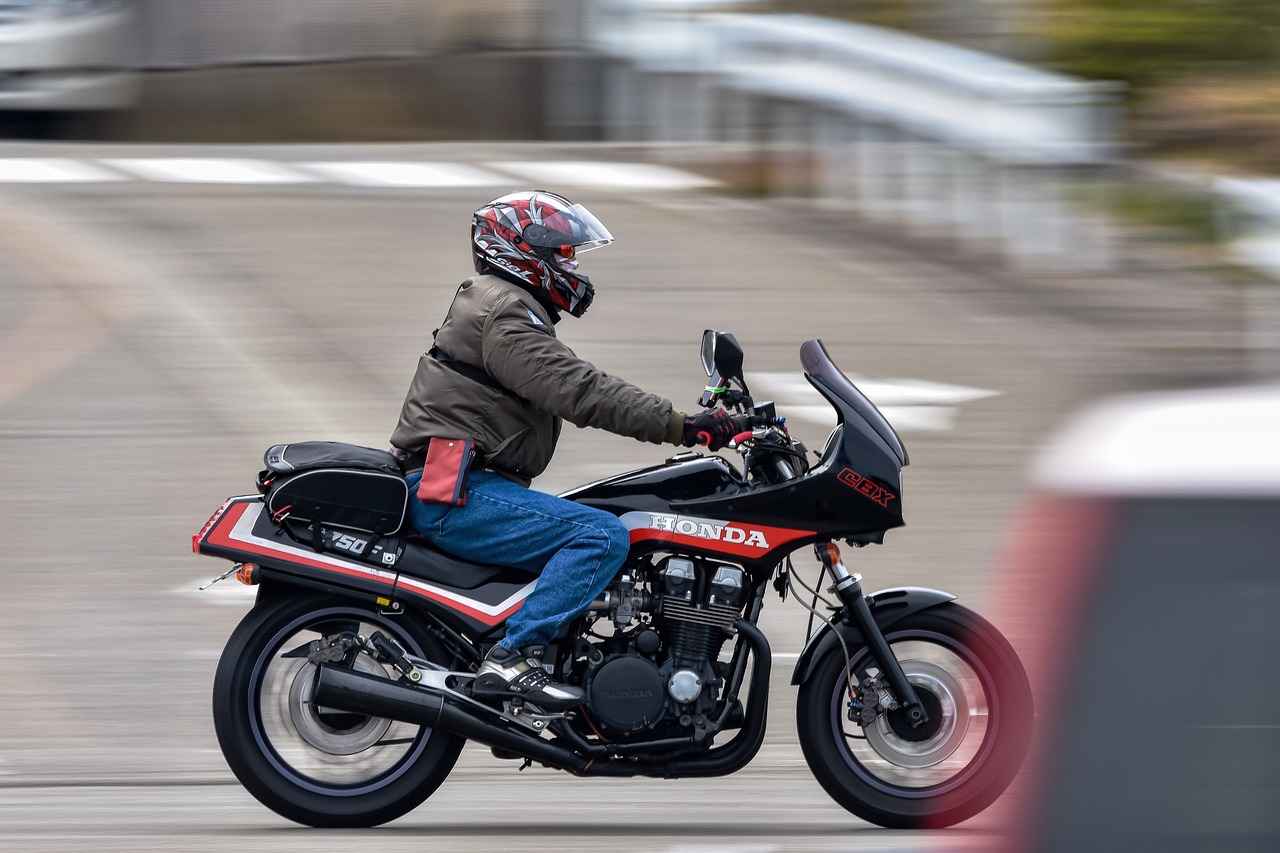
10. Maintenance Tips for Electric Bike Motors
Proper maintenance of your electric bike motor is crucial for enhancing its lifespan and performance. By conducting regular checks and servicing, you can ensure optimal functionality and enjoy a smooth riding experience.
Just like any other mechanical component, electric bike motors require consistent care to operate efficiently. Regular maintenance helps identify potential problems early, preventing costly repairs and ensuring your bike remains in top condition.
- Regular Inspections: Conduct frequent inspections of the motor and associated components. Look for signs of wear, loose connections, or unusual noises.
- Cleaning: Keep the motor clean from dirt and debris. Use a damp cloth to wipe the exterior and ensure that air vents are unobstructed.
- Battery Care: Monitor battery performance and charge levels. Ensure connections are secure and clean to promote efficiency.
- Software Updates: If your electric bike motor has software that can be updated, ensure you keep it current for optimal performance.
- Professional Servicing: Schedule professional servicing at least once a year to address any deeper mechanical issues that may require expert attention.
Investing time in maintaining your electric bike motor not only extends its lifespan but also enhances your overall riding experience. A well-maintained motor provides better acceleration, improved torque, and a more enjoyable ride.
In summary, regular maintenance of your electric bike motor is essential for ensuring its longevity and peak performance. By implementing these maintenance tips, you can enjoy a reliable and efficient riding experience for years to come.
10.1. Regular Inspections
Maintaining an electric bike’s motor is crucial for ensuring optimal performance and longevity. Frequent inspections of the motor and related components can help identify potential issues before they escalate, ensuring a smooth riding experience. Regular checks allow you to catch minor problems early, preventing them from developing into costly repairs or safety hazards.
- Visual Checks: Regularly inspect the motor for any signs of wear, damage, or loose connections. Look for frayed wires, corrosion, or any unusual noises during operation.
- Performance Monitoring: Pay attention to how the bike performs during rides. If you notice a decrease in power or unusual vibrations, it may be time for a more thorough inspection.
- Battery Health: Regularly check the battery and its connections, as a failing battery can affect the motor’s performance. Ensure that the battery terminals are clean and free of corrosion.
- Cleaning: Keep the motor clean from dirt and debris, which can hinder performance and lead to overheating. Use a soft cloth and mild cleaner to wipe down the motor and surrounding areas.
Incorporating these inspection practices into your regular maintenance routine can significantly enhance the reliability and performance of your electric bike. It not only ensures a smooth ride but also extends the lifespan of your motor and related components.
In conclusion, taking the time for regular inspections is a proactive approach that pays off in the long run. By being vigilant and addressing minor issues promptly, you can enjoy a safer and more enjoyable riding experience.
10.2. Cleaning and Care
Maintaining your electric bike motor is crucial for ensuring its optimal performance and longevity. One of the most important aspects of this maintenance is keeping the motor clean. Dirt and debris can accumulate over time, leading to potential issues that can affect the motor’s efficiency and lifespan.
Why Cleaning is Important
- Prevention of Damage: Accumulated dirt can cause wear and tear on the motor’s components, leading to costly repairs.
- Enhanced Performance: A clean motor operates more efficiently, providing better power output and smoother rides.
- Longevity: Regular cleaning can extend the life of your motor, allowing you to enjoy your electric bike for years to come.
Steps for Cleaning Your Electric Bike Motor
- Gather Your Supplies: You’ll need a soft brush, a damp cloth, mild soap, and water.
- Turn Off the Motor: Ensure that the bike is powered off to avoid any electrical issues while cleaning.
- Remove Loose Dirt: Use a soft brush to gently remove any loose dirt or debris from the motor.
- Wipe Down: Dampen a cloth with a mixture of mild soap and water, and carefully wipe the exterior of the motor.
- Dry Thoroughly: Make sure to dry the motor completely to prevent moisture buildup, which can lead to corrosion.
Regular Maintenance Tips
- Inspect the motor regularly for any signs of wear or damage.
- Check the connections and wiring for any loose or frayed areas.
- Consider professional servicing annually to ensure everything is in top condition.
By following these cleaning and care guidelines, you can significantly improve the performance and durability of your electric bike motor. Remember, a clean motor is a happy motor!
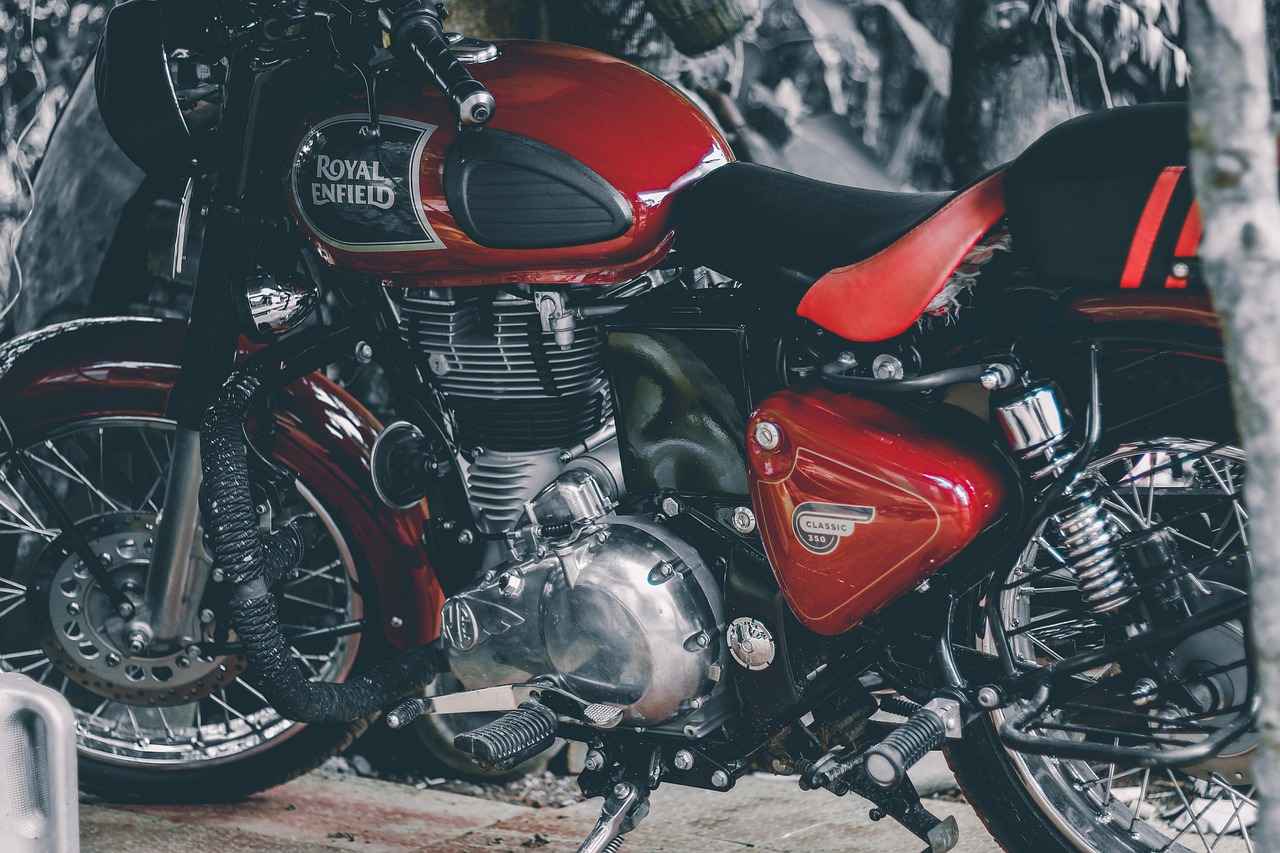
11. User Reviews and Experiences
User Reviews and Experiences play a crucial role in understanding the performance and reliability of electric bike motors. By examining feedback from actual users, potential buyers can gain valuable insights that go beyond technical specifications and marketing claims.
Many cyclists turn to user reviews to help them make informed choices when selecting an electric bike motor. These reviews often highlight real-world experiences, showcasing how different motors perform under various conditions. For instance, a mid-drive motor may receive praise for its exceptional torque and ability to handle steep inclines, while a hub motor might be favored for its ease of use and straightforward installation.
| Motor Type | User Feedback Highlights |
|---|---|
| Hub Motors | Simple installation, good for casual riding, but may lack power on steep hills. |
| Mid-Drive Motors | Excellent for off-road and hilly terrains, highly rated for torque and efficiency. |
| Geared Hub Motors | Strong acceleration, ideal for urban commuting, but can be noisier. |
| Direct-Drive Motors | Reliable and quiet, great for long-distance rides, but heavier than geared options. |
Additionally, expert reviews complement user experiences by providing insights on the best electric bike motors available in the market. These reviews often include comparisons based on performance, reliability, and overall user satisfaction, helping to guide potential buyers in their decision-making process.
In conclusion, taking the time to read user reviews can significantly enhance your understanding of electric bike motors. By considering the experiences of others, you can make a more informed choice that aligns with your riding style and needs.
11.1. Real-World Performance
Real-World Performance of electric bike motors can significantly influence a rider’s experience, as user feedback often sheds light on both the advantages and disadvantages of various motor types. Understanding these real-world insights is crucial for potential buyers looking to make an informed decision.
Users frequently report that hub motors tend to excel in urban commuting scenarios. Their simplicity and ease of use make them a popular choice for casual riders. Many cyclists appreciate the low maintenance required for hub motors, as they are generally less complex than mid-drive systems. However, some users note that hub motors may struggle with steep inclines, making them less ideal for hilly terrains.
On the other hand, mid-drive motors are often praised for their superior performance on challenging landscapes. Riders who tackle hills or off-road paths regularly find that mid-drive systems offer enhanced torque and acceleration. This is particularly beneficial in mountainous regions where the ability to climb steep gradients is crucial. However, users also mention that these motors can require more frequent maintenance, as they are integrated with the bike’s drivetrain.
When it comes to geared hub motors, many users appreciate their balance of power and efficiency. These motors provide strong acceleration, making them suitable for both urban and suburban environments. However, some cyclists have reported that geared hub motors can be noisier compared to direct-drive options, which may detract from the overall riding experience.
In contrast, direct-drive motors are often highlighted for their reliability and quiet operation. Users value the consistent power output they provide, especially on flat terrains. However, the added weight of direct-drive motors can be a downside for those who frequently navigate hilly areas.
Ultimately, user experiences offer invaluable insights that go beyond technical specifications. By considering the feedback from fellow cyclists, potential buyers can better assess which electric bike motor aligns with their specific needs and riding style.
11.2. Recommendations from Experts
Recommendations from Experts play a crucial role in guiding potential buyers toward the best electric bike motors available. With the growing popularity of e-bikes, numerous models have flooded the market, making it essential to rely on expert opinions to navigate this vast landscape.
Experts analyze various factors including performance, reliability, and user satisfaction when reviewing electric bike motors. Their assessments often include:
- Performance Metrics: Experts evaluate how well a motor performs under different conditions, such as steep hills or rough terrain. They often conduct rigorous testing to measure acceleration, torque, and overall efficiency.
- Reliability Ratings: The durability of a motor is paramount. Reviews frequently highlight models that withstand wear and tear over time, ensuring that users get the most value for their investment.
- User Satisfaction Surveys: Expert reviews often incorporate feedback from actual users. This information can provide insights into how a motor performs in real-world scenarios, beyond just technical specifications.
Additionally, experts may highlight specific brands or models that consistently receive high ratings. For instance, mid-drive motors are often praised for their superior torque and climbing ability, making them favorites among off-road enthusiasts. Conversely, hub motors are recognized for their simplicity and ease of use, appealing to casual riders.
In conclusion, consulting expert recommendations is invaluable when selecting an electric bike motor. By weighing their insights against personal needs and preferences, potential buyers can make informed decisions that enhance their cycling experience.
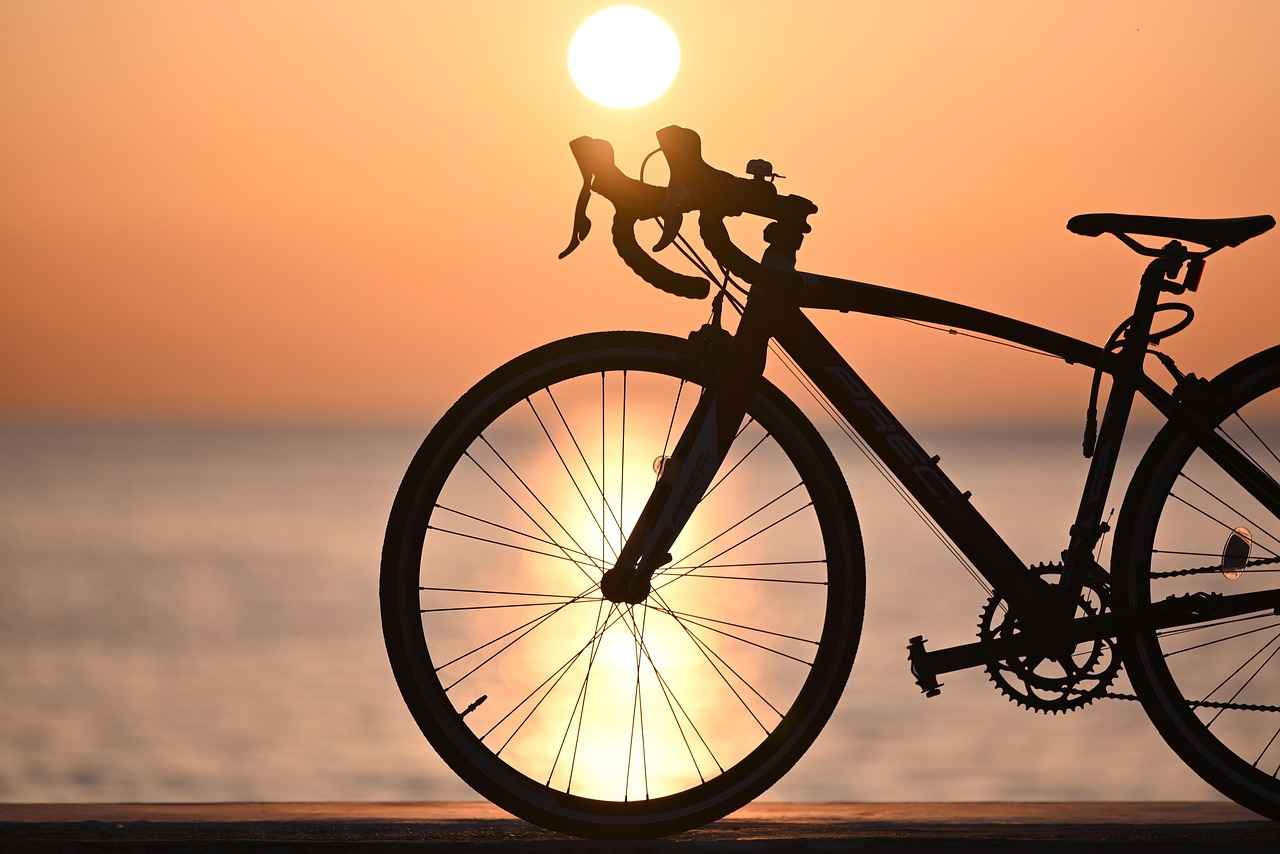
12. Conclusion: Making an Informed Choice
In the realm of electric bikes, the choice of motor plays a pivotal role in determining your overall riding experience. As we have explored, various motor types come with their unique advantages, catering to different cycling needs and preferences. Understanding these differences is crucial for making an informed decision that aligns with your lifestyle and riding goals.
When evaluating the right motor for your electric bike, consider factors such as your typical riding terrain, whether it be urban commuting or off-road adventures, and your personal comfort with technology. Hub motors offer simplicity and ease of use, making them ideal for casual riders, while mid-drive motors excel in performance, particularly on challenging terrains. If you often ride in hilly areas, the enhanced torque of mid-drive motors can significantly improve your experience.
Additionally, budget considerations are essential. Hub motors are generally more affordable, making them accessible for entry-level cyclists. In contrast, mid-drive systems, while pricier, provide advanced features that may justify the investment for serious riders. Always assess the long-term benefits of your purchase, including maintenance costs and potential upgrades.
Furthermore, keep in mind the importance of battery compatibility. Selecting a battery that complements your motor type can enhance performance and extend your riding range. It’s advisable to choose high-quality lithium-ion batteries, as they offer the best balance of weight and efficiency.
In summary, making an informed choice involves a careful evaluation of your needs, preferences, and budget. By understanding the distinct characteristics of each motor type, you can select the perfect electric bike that will elevate your cycling adventures and meet your expectations. Happy riding!
Frequently Asked Questions
- What are the main types of electric bike motors?
The main types of electric bike motors include hub motors, mid-drive motors, geared hub motors, and direct-drive motors. Each type has its own unique benefits and is suited for different riding styles and terrains.
- How do I choose the right motor for my e-bike?
Choosing the right motor involves considering your riding style, the terrain you’ll be riding on, and your budget. If you plan on commuting, a hub motor may be ideal, while mid-drive motors are great for off-road adventures.
- Are mid-drive motors better for climbing hills?
Yes! Mid-drive motors excel in torque and efficiency, making them perfect for tackling steep inclines. Their design allows for better weight distribution, enhancing performance on hilly terrains.
- What is the difference between geared and direct-drive hub motors?
Geared hub motors have internal gears that improve torque, making them great for steep hills, while direct-drive motors are simpler and quieter, offering a smooth ride on flat terrains.
- Do electric bike motors require maintenance?
Yes, maintenance is essential! Regular inspections and cleaning can help prolong the life of your motor and ensure optimal performance, especially for mid-drive systems that are more complex.
